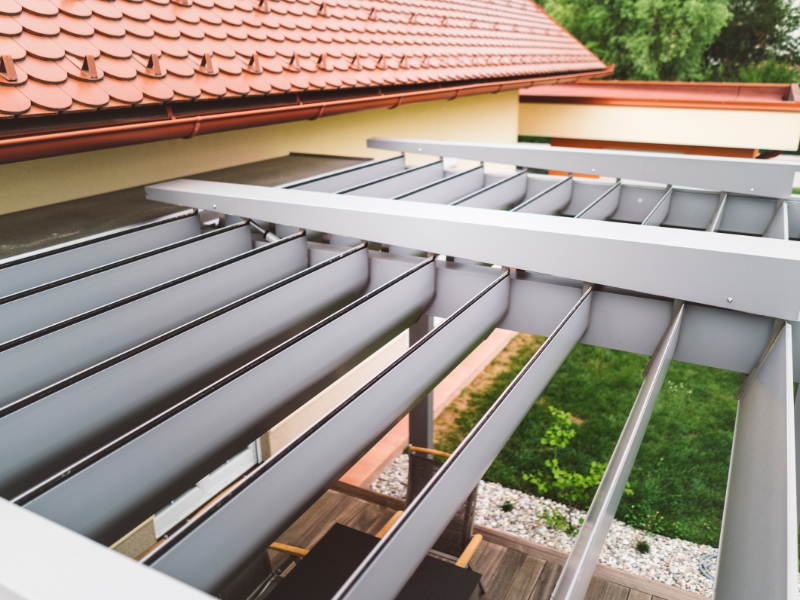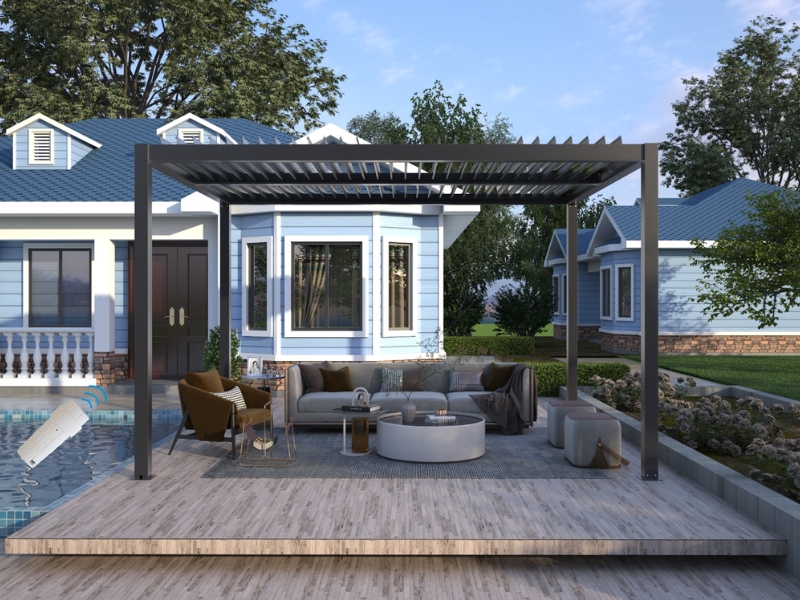Selecting the right parts of a pergola can make or break your outdoor build. With so many kit options available, it’s easy to overlook what truly matters — structural strength, weather endurance, and long-term use. Too often, people get caught up in appearances or trends, only to find their pergola warping, leaning, or falling short of expectations. Understanding the core components helps prevent wasted time, material mismatches, and costly fixes. Whether you’re assembling it yourself or hiring a pro, knowing how each part contributes to function and form puts you in control of the outcome. This article breaks down the most important parts of a pergola to prioritise in any kit selection.
What are the essential components for structural integrity?
A pergola’s strength depends heavily on a few foundational components. Without these, even the most stylish build won’t hold up.
- Posts: Support the vertical load, anchoring the structure securely to the ground, deck, or footing.
- Beams: Span between posts, transferring weight from the roof to the base, and providing lateral stability.
- Rafters: Sit perpendicular to the beams and shape the overhead grid while supporting the roof load.
- Bracing and hardware: Maintain rigidity at joints to prevent swaying and absorb movement from wind.
Neglecting quality in these areas can lead to swaying, sagging, or even worse — collapse. A wobble in one post or a poorly aligned beam can throw the whole structure off. That’s why it pays to explore a quality selection of durable pergolas that match both your local weather and design needs.
How do different pergola materials affect the longevity of each element?
The materials you select will determine how long your pergola lasts and how often it requires maintenance. Here’s what you should weigh:
- Treated Pine: Budget-friendly option, requires sealing every year or two to prevent warping and rot.
- Hardwood: Long-lasting in Aussie climates, needs oiling to preserve rich tones and resist insects.
- Aluminium: Lightweight, rustproof, and low-maintenance, ideal for coastal areas with salt exposure.
- Galvanised or Powder-Coated Steel: Strong and sleek, though vulnerable if the coating is scratched or exposed.
Match material choice with climate and exposure. For example, aluminium resists corrosion in humid or coastal zones, while timber suits natural-style landscapes but needs more upkeep. For extended durability, it is better to select structural pergola components based on local conditions and your maintenance capacity.
Why is it important to know each part when installing a pergola DIY?
DIY pergola builds can save money, but they require attention to detail. Knowing what each part does helps avoid major setbacks.
- Post spacing impacts load distribution and ensures the base layout matches kit specifications.
- Beam-to-rafter alignment: Prevents overhang misfits and uneven roof lines that weaken aesthetics.
- Hardware matching: Reduces installation delays and ensures correct bolt sizes, angles, and bracing strength.
- Kit labelling: Helps in organising and understanding the sequence of assembly, especially for custom sizes.
Getting familiar with the anatomy of a pergola avoids misdrilled holes, leaning frames, or parts left unused. It speeds up installation and reduces stress. Your build goes more smoothly when you invest time in understanding the elements of a pergola kit first.
Can thoughtful design choices enhance the visual appeal of your pergola?
Function matters, but don’t overlook the role design plays. The shape, detail, and finish of each part influence the pergola’s overall vibe.
- End-cut patterns: Turn plain beams into visually appealing accents that match architectural themes.
- Colour-matched fasteners: Hide visible hardware and create a cleaner, more finished look.
- Layered rafters: Add visual depth, helping the structure stand out in larger yards or open spaces.
- Decorative columns or sleeves: Elevate standard posts with classic or modern styling options.
Even the angle or overhang of rafters can define the space. For instance, angled rafters cast more dramatic shadows, making the space feel more dynamic. Small design choices in individual parts add up to big aesthetic gains.
Is it possible to customise your pergola kit for tricky outdoor spaces?

Standard kits work for some, but many outdoor areas need something tailored. Luckily, most kits allow some level of adjustment.
- Cut-to-length components: Fit odd-shaped patios, side yards, or narrow strips without overhanging.
- Adjustable post bases: Anchor into concrete, timber, or pavers with custom spacing and elevation.
- Optional rafter spacing: Allows you to increase or reduce light entry based on your use case or garden needs.
- Roof shape variations: Gable, flat, or skillion options, adapt to architectural constraints or council regulations.
Customisation is key when space is tight or oddly shaped. Without it, you risk gaps, awkward layouts, or water pooling. Even off-the-shelf kits often include options for adjustment — make the most of them. It’s smart to check building approval requirements for pergolas to ensure compliance before modifying kit dimensions.
How often should you maintain the key structural components?
Regular upkeep helps preserve appearance and function. The amount of work depends largely on the material and environment.
- Timber parts: Need annual inspection for rot, splitting, or termites. Clean and recoat with sealant or oil.
- Steel structures: Check for chipped coatings and spot-treat rust to avoid spreading. Repaint as needed.
- Aluminium systems: Require minimal care — a yearly rinse and bolt check often suffice.
- Fixings and brackets: Tighten bolts and screws seasonally, especially after heavy winds or rain.
Neglecting maintenance can quickly lead to wood rot, joint failure, or corroded fasteners. A few hours annually can extend lifespan by years. A good rule: inspect once a season and act before problems grow.
Are there innovative upgrades that improve pergola performance?
Modern pergolas go far beyond shade. New features can enhance comfort, improve energy efficiency, and facilitate daily use.
- Louvre roofing systems: Allow airflow and control sun exposure with manual or motorised adjustments.
- Retractable covers or blinds: Adapt your pergola to the weather, ideal for summer sun or winter rain.
- Integrated lighting tracks: Create ambient or task lighting, wired through hollow beams for clean installation.
- Innovative features: Solar-powered fans, rain sensors, and app-based lighting systems bring convenience.
For those looking to entertain or relax outdoors year-round, these upgrades make a real difference. For example, retractable louvres allow precise control over light and ventilation, transforming a static structure into a dynamic space. It’s worth reviewing how these compare to traditional outdoor shade structures when planning long-term improvements.
Pergola Part Comparison Table
Pergola Part | Primary Function | Materials | Maintenance Level | Customisable? |
Posts | Support vertical load | Powder-coated aluminium | Low | Yes |
Beams | Span load, connect posts | Powder-coated aluminium | Low | Yes |
Rafters / Louvres | Roof shaping, airflow/light control | Aluminium louvres | Low | Yes (manual/motorised) |
Hardware & Brackets | Join and support structural elements | Galvanised/Stainless steel | Low | Limited (standardised) |
Roofing Add-ons | Shade, comfort, usability | Screens, glass, LEDs, heaters | Low | Yes |
Use this chart when weighing options in your kit selection process.
Final thoughts
The parts of a pergola aren’t all created equal, and knowing which ones matter most helps you avoid drama down the track. A strong foundation, durable materials, and thoughtful design go a long way in making your pergola last and look the part. If you’re still unsure which direction to take, take a moment to assess your layout and goals, then ask Unique Pergolas about your project. Their expert advice could be exactly what you need to move forward with confidence and clarity.


